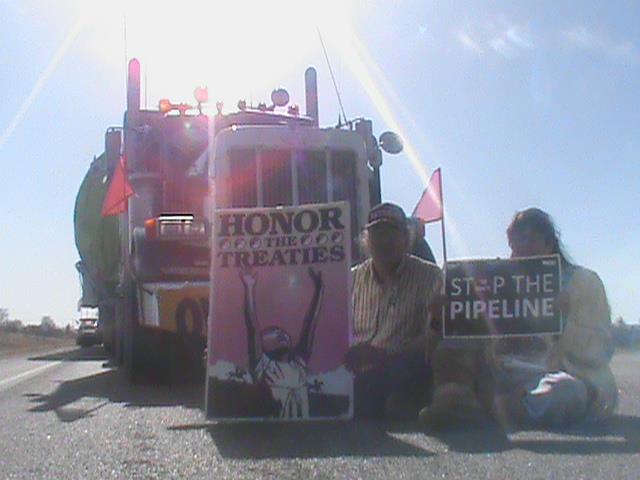By Suzanne Goldenberg / The Guardian
Barack Obama is expected to speed up approval of the Keystone XL tar sands pipeline on Thursday after taking to the road with what the White House is billing as an “all of the above” energy tour.
Obama’s planned visit to the oil hub of Cushing, Oklahoma, on day two of the energy tour has raised expectations he will speed up approval of the southern US-only segment of the pipeline, running from the town to Port Arthur, Texas.
The approval, which would infuriate environmental groups, could allow construction on that portion to begin before November’s presidential elections instead of next year.
Obama’s tour starts with a visit to the country’s biggest operating solar farm in Boulder City, Nevada. The White House said in a statement: “The president will highlight his administration’s focus on diversifying our energy portfolio, including expanding renewable energy from sources like wind and solar, which thanks in part to investments made by this administration is set to double in the president’s first term.”
But the visit seemed a detour on a trip apparently solidly focused on fossil fuels and the price of gas at the pump.
Obama has been under nonstop attack from Republicans for rising petrol prices, which now stand at well over $4 (£2.50) for a US gallon in some parts of the country, and for his decision in January to halt the pipeline because of a section running through an ecologically sensitive part of Nebraska.
On the campaign trail, Newt Gingrich has said he would cut gas prices to $2.50 if he is elected president, and Mitt Romney has taken to demanding Obama sack his energy secretary, Steven Chu, the interior secretary, Ken Salazar, and his Environmental Protection Agency administrator, Lisa Jackson. Gingrich calls the three the “gas hike trio”.
But Obama’s forthcoming speech at a pipe yard owned by TransCanada, the Canadian company behind the project to pump crude from the tar sands of Alberta, was seen as a strong signal that the pipeline – at least, the portion running from Cushing to Port Arthur, Texas – is back on track.
The White House said last month it would allow the southern portion, which requires no State Department approval, to go ahead. It was not immediately clear how Obama would push the process along further.
TransCanada has said it will go ahead with the Cushing-Port Arthur segment of the pipeline as soon it gets the go-ahead from the army corps of engineers.
The White House said in a statement Obama’s visiting Cushing was intended to show his commitment to “improving and supporting the infrastructure that helps us leverage our domestic resources, while also ensuring these projects are developed in a safe and responsible way”.
It continued: “This includes a pipeline that will transport oil from Cushing to the Gulf of Mexico, which will help address the bottleneck of oil that has resulted in large part from increased domestic oil production in the midwest.”
Fast-tracking a portion of the pipeline would be a huge disappointment for a broad coalition of activists who have campaigned against the project, framing it as a test of Obama’s green credentials.
Friends of the Earth accused Obama of trying to dupe his environmental supporters by initially rejecting the pipeline, and then turning around to expedite the project. “Was the President’s initial rejection of the Keystone XL simply a farce to temporarily appease the environmental voters who dared to hold him to his own promises about real leadership on the climate,” the group said. “It would seem so.”
But Obama has come under even greater pressure from Republicans and some Democrats to approve the pipeline, and lower gas prices.
The schedule for the two-day energy roadshow exhibits those competing pressures. From his first stop at the solar facility in Nevada, which produces enough power for 17,000 homes, Obama is due to head to the oil and gas fields of New Mexico.
While there, he is expected to talk up the expansion of domestic oil and gas production during his time at the White House. In recent days, administration officials have been touting the expansion of domestic oil and gas production over the last few years. Much of that expansion is due to fracking, in another disappointment for environmental groups.
After his stop in Oklahoma, Obama is expected to end his trip with a speech on conservation at Ohio State University in Columbus.
From The Guardian: http://www.guardian.co.uk/world/2012/mar/21/obama-oil-fuel-pipeline


